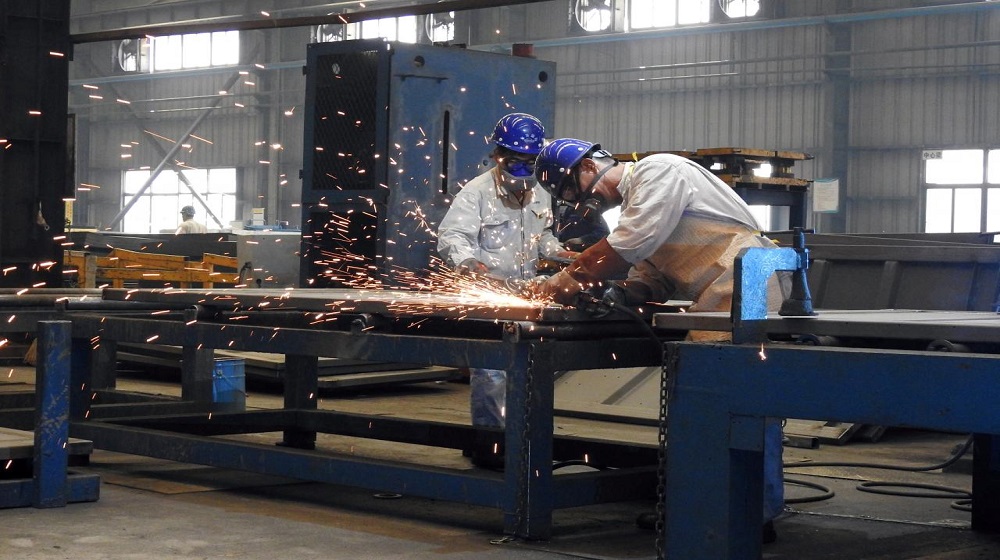A comparison between Small and Household Manufacturing Industries 2015 and Small and Household Manufacturing Industries (SHMI) 2006-07 and 1996-97 has revealed that overall manufacturing units have increased with an annual growth rate of 6.51 percent over this period as household establishments increased by 10.92 percent, while small establishments increased by 1.58 percent, according to the Pakistan Bureau of Statistics.
The Pakistan Bureau of Statistics (PBS) released the SHMI 2015 Report which covers small scale industrial establishments and household manufacturing units in Pakistan that are engaged in various types of manufacturing activities, and provides data on the variables of significant economic importance such as employment, employment costs, and gross value added, etc.
The PBS conducted the first survey on SHMI in 1976-77 only in the urban areas of Pakistan. However, both rural and urban areas were covered in the second, third, fourth, and fifth rounds in 1983-84, 1987-88, 1996-97, and 2006-07 respectively. The latest survey is the sixth in the series, with the reference year of 2015.
Scope and Coverage: The SHMI Survey was conducted in randomly selected urban and rural areas of the four provinces. Azad Jammu and Kashmir, Gilgit-Baltistan, and the erstwhile FATA were excluded from the scope of the survey. While this survey is nationally representative, enumeration was not undertaken in the military restricted areas.
The report shows that the manufacturing establishments reported in 2015 are (1,242,124) as compared to the 704,065 manufacturing establishments reported in SHMI 2006-07. In SHMI 2015, a total of 1,242,124 establishments were estimated in Pakistan with 195,189 in the rural areas and 1,046,935 in the urban areas. Out of the total units, 787,964 (63.4 percent) were household manufacturing units and 454,160 (36.6 percent) were small manufacturing establishments.
The analysis reveals that household establishments decreased in Balochistan over the period 1996-97 to 2006-07 but they increased at a higher rate between 2006-07 to 2015.
In the overall SHMI units, all the provinces registered positive growth rates in 2015 as compared to the 2006-2007 survey with 5.04 percent in Punjab, 9.76 percent in Sindh, 4.79 percent in Khyber Pakhtunkhwa, and a maximum growth of 30.57 percent in Balochistan.
The household manufacturing establishments in Balochistan had increased with a maximum growth rate of 32.52 percent, followed by 15.93 percent in Sindh, 8.72 percent in Khyber Pakhtunkhwa (KP), and 8.61 percent in Punjab. The pattern is different for small manufacturing establishments with growth rates of 23.72 percent, 1.77 percent, 1.21 percent, and 0.93 percent for Balochistan, KP, Punjab, and Sindh respectively.
The province-wise analysis shows that percentages of household units operated by individual ownership are 95.41 percent in Punjab, 92.28 percent in Sindh, 97.56 percent in KP, and 99.38 percent in Balochistan. Likewise, the percentages of small establishments operated by individual ownership were 96.60 percent in Punjab, 98.38 percent in Sindh, 96.43 percent in KP, and 98.61 percent in Balochistan.
The contribution to the GDP (producers value) recorded in SHMI 2015 was Rs. 476, 132 million, and Rs.104, 332 million in the SHMI 2006-2007. This indicates a fourfold increase over eight and half years. Furthermore, the estimated value added based on the survey depicts an increase of 22 percent (rebasing impact) when compared with the published figure of the National Accounts, PBS, which is to the tune of Rs. 390.1 billion for the same period. This increase could also be attributed to the better coverage of this sector.
Out of the total contribution of Rs. 476,260 million to the GDP by all the SHMIs reported in the survey at the national level, small manufacturing industries contributed Rs. 393, 969 million with a percentage share of 39 percent, and household industries contributed Rs. 82,289 million with a percentage share of 18 percent. The value of fixed assets at the end of 2015 had been calculated as Rs. 81.98 billion.
The contribution of building and structure is maximum in GFCF with Rs. 52 billion (64 percent), followed by machinery and equipment at Rs. 28 billion, which is about 34 percent of the total.
The data on employment by type and size has revealed that there were as many as 2,695,130 workers engaged in small and household manufacturing establishments throughout the country. Of them, 1.5 million (56 percent) were working in household establishments and 1.19 million (44 percent) were engaged by small establishments.
The comparison of the employment size with that of SHMI 2006-07 reveals that the total number of persons engaged reported in SHMI 2006-07 was 17, 48,389, which increased to 2,695,130 as reported in SHMI 2015, indicating an annual increase of 5.2 percent.
In the current survey, the data were also collected on the type of ownership. Three categories of individual ownership, partnership, and others were included in the questionnaire.
The province-wise percentage distribution of the persons engaged in all the units varies considerably with Punjab on the top with 1,473,596 persons, followed by Sindh with 545,305 persons, KP with 424,582 persons, and Balochistan with 251,647 persons. This trend deviated slightly when the data was decomposed by household and small establishments.
For example, Balochistan leads marginally over KP with a one percent percentage point in household units, and KP indicates 242,988 persons as compared to Sindh’s 169,491 and Balochistan’s 43,301 in small establishments. The average number of persons engaged in household and small establishments is 1.9 persons and 2.63 persons respectively.
In the SHMI 2006-2007, the total production was recorded as Rs.230, 656 million, which increased to Rs. 859,265 million in the SHMI 2015, showing a per annum increase of 16.7 percent over this period.
By arranging the 10 industries classified at a 5-digit level in descending order according to their value of production, it was observed that jewelry and goldsmiths at Rs. 132,957 million leads among other industries in case of the value of production, whereas production per worker is the highest for the manufacturing of prepared meals and dishes, followed by jewelry and goldsmiths.


























